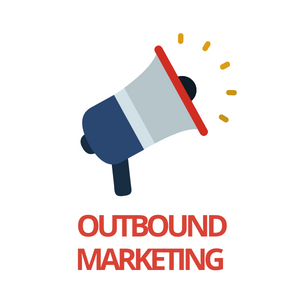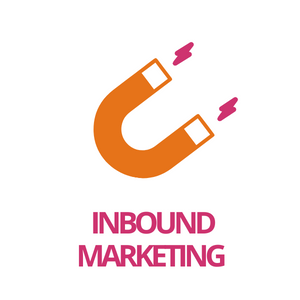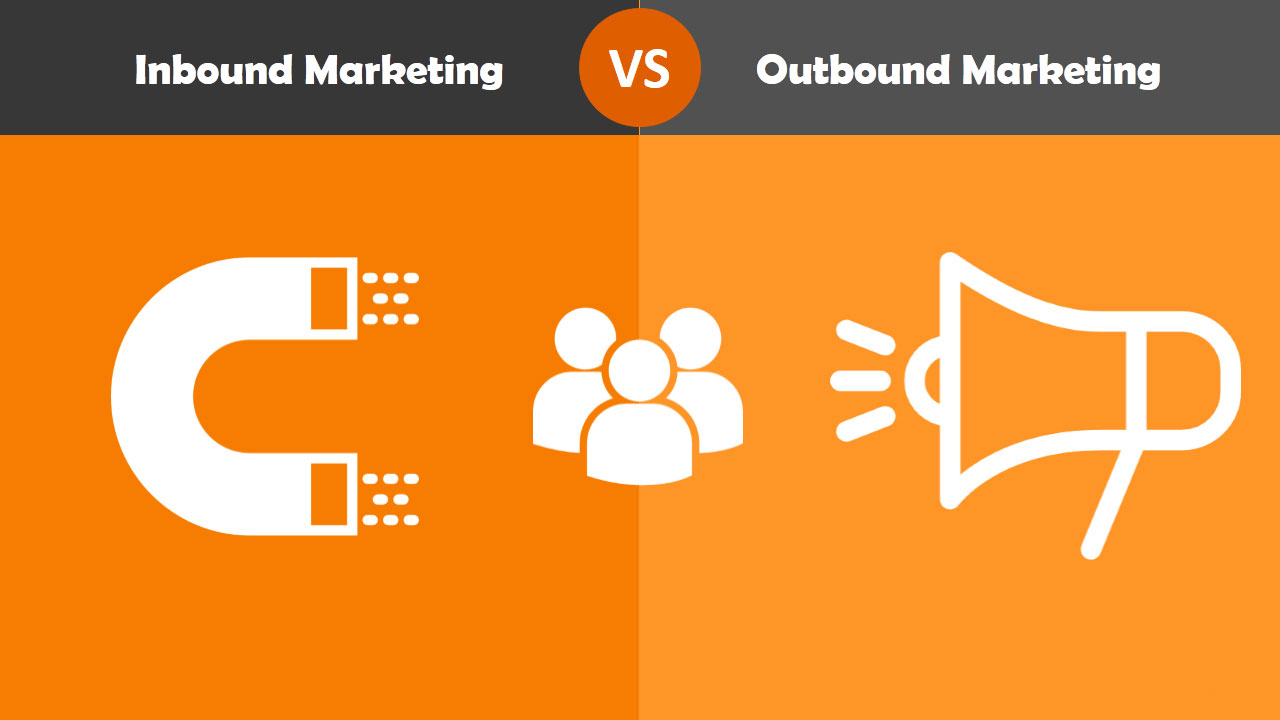Marketing is something without which it is impossible to exist on the market, especially now, when it is very competitive. Fortunately, nowadays, conducting wide-ranging and effective marketing activities does not require a huge budget, so success is basically available to everyone. First, however, it is worth deciding whether it is better to conduct inbound or outbound marketing. Or maybe both?
Inbound marketing versus outbound marketing
Where does this division into two types of marketing come from and what does it mean? Outbound marketing is defined as “outbound”. It includes all activities of addressing the customer and thus encouraging him to take advantage of the offer. It includes, among others direct advertising and promotion.
Inbound marketing, in turn, is called “inbound”. It consists in carrying out such activities that are to lead to a situation in which the customer will find a given company and express interest in its offer.
Figuratively speaking, outbound marketing can be compared to a loudspeaker or a megaphone from which advertising slogans and a message directly encouraging you to use specific services are heard. Meanwhile, inbound marketing activities can be compared to a magnet that attracts customers to the company and its offer. In practice, the outbound strategy uses, among others:
– graphic advertising on the Internet,
– TV and radio advertisements,
– outdoor advertising,
– telemarketing,
– leaflets, advertising catalogs, brochures,
– paid links and advertisements on various websites,
– mailing and SMS campaigns,
– on-site advertising: incl. web push notifications, pop-ups, chats encouraging contact.
Meanwhile, as part of inbound marketing, you should deal with:
– company site,
– SEO,
– content marketing (including blogs, podcasts, webinars, video content, etc.),
– social media,
– newsletters,
– discussion forums.
All these activities should be based on prior arrangements as to the target group and its exact profile. Only then can they be tailored to the needs of a potential customer, and therefore effective in attracting him and then generating conversions.
Outbound marketing – principles and advantages

Currently, inbound marketing strategies are used much more often, while those “outbound” are often considered less beneficial, less effective, and even outdated. It doesn’t have to be that way, though. Most often, in outbound marketing, an undefined message is used – the same for all recipients and usually not fully supported by the expectations of the target group. However, it is also possible to test different formats and check their effectiveness.
It is important to remember to adapt the rules of operation of outbound marketing to the needs of the modern consumer. There is no place for outdated techniques or intrusive, irritating advertising. However, it is worth taking care of:
– personalization of communication – wherever possible;
– adopting an advisory, expert tone – customers do not like pushy “stuffing” them with products, but value reliable information and advice from professionals;
– careful selection of communication channels – depending on e.g. on the scale of the business, industry and target group.
The advantages of outbound marketing include:
– control over the message in communication (because it is usually one-sided),
– the ability to quickly achieve results, such as building awareness of a given brand,
– relatively low costs in the case of running online campaigns,
– the possibility of operating on a large scale.
Certainly there are also some disadvantages to this type of strategy. This, for example:
– the risk of causing negative reactions from potential customers (intrusive and disturbing advertising),
– some difficulties with targeting the message (i.e. adjusting its form and content to a specific recipient), in particular outside the Internet,
– the risk of the message being ignored by the recipients – the society is flooded with constant advertising message, therefore it becomes resistant to it,
– relatively high costs per acquired lead.
Can inbound marketing be an effective solution for your company then?
Inbound marketing – principles and advantages

The idea of inbound marketing is based on attracting customers. Therefore, it requires a thorough understanding of their needs. How to make the client want to come to you? Belongs:
– develop a detailed marketing strategy – vision, goals and methods of their implementation;
– define precisely who is the target recipient of your services – the profile of your model client should include as much information as possible, including age, gender, profession, habits, expectations or needs;
– prepare a website – keeping in mind its aesthetics, functionality and maximum simplicity, which will facilitate the shopping path and conversion;
– create valuable content and constantly supplement the website with it;
– keep profiles on social media, ensuring that the content presented in them is up-to-date;
– use thematic and industry websites;
– take care of the constant acquisition of leads and develop a system that will help make sure that they will become customers;
– constantly analyze the methods used and deal with their improvement.
Inbound marketing should be focused primarily on building brand awareness and strength as well as gaining customer trust. This has its advantages, provided, of course, that the strategy is properly developed and implemented. These include, among others:
– the ability to reach a large group of customers,
– relatively low costs,
– many forms of communication and almost unlimited possibilities in terms of creation,
– high targeting opportunities,
– the ability to build brand authority and inspire trust at the same time,
– a message based on the intention to buy or the customer’s interest – does not arouse desire, is not intrusive,
– hard sale.
However, this is not a flawless method! They can include:
– high barrier to entry – inbound is based on tools whose level of complexity has increased significantly over the last decade. In principle, the support of a specialist is necessary to obtain optimal results.
– Limited opportunities to build coverage in niche industries – going beyond them can dramatically increase the cost of customer acquisition.
– High budget required in some segments.
When to use outbound marketing?
Certain criteria should be taken into account when considering the two types of marketing strategy. In some cases, outbound marketing works much better, and in other cases it is better to focus on inbound methods. So when is it worth using outbound strategies and addressing customers directly?
When you expect quick results
We have to wait for the results of inboud activities. So if you need to achieve specific goals, it’s best to turn to outbound techniques or paid advertising like Google Ads. They usually allow you to gain certain clients or leads in a short time. It is worth remembering, however, about the principles of running effective outbound campaigns, which have been included above.
When you are new to the market
It is difficult for small, new companies to break into the minds of customers by conducting only inbound marketing activities, and waiting for results may lead to a deterioration of the company’s financial situation. Therefore, to put your foot in the door crack, it is worth using outbound strategies that will help increase brand visibility, and at the same time gain leads at a much lower cost.
When you have a limited budget to start
If you have a small amount of capital, you definitely cannot wait for the effects of running incoming campaigns. Then a well-thought out action of the outbound type with paid channels may prove useful. Of course, this does not apply to companies that have, for example, low fixed costs and can afford to wait longer for results despite a limited budget.
When to use inbound marketing?
Of course, there are also situations in which inbound marketing is usually much better. When is it worth using?
When you take your time
Do you want to build a strong brand, but do not expect immediate results? If you have the right budget and can afford to slowly build your position, it is worth focusing on intense inbound activities. Remember that it can take many months from starting them to acquiring a client. Meanwhile, there is still time to carefully prepare your marketing strategy.
When you realize the importance of good content and have the opportunity to create it
Writing an expert article for your company’s blog from time to time may seem like a simple task that you can do yourself in your spare time. However, this is very disastrous thinking. Taking care of the published content is very important, so it should not be work done “on the occasion”. It should be ensured that the content is of high quality and complies with SEO principles, which requires appropriate knowledge. In addition, someone has to watch over the regularity of publishing the content. Therefore, it should be dealt with by a specific, designated person who at the same time has the appropriate qualifications. Instead of hiring a new employee, you can entrust this task to an agency – in many ways it is a more profitable solution.
When you know your target audience
The great strength of inbound activities is the ability to precisely match them to the target group. Therefore, you absolutely must know it very well – otherwise the strategy you are pursuing will not make much sense. You need to know who your customer is, but also what messages he / she reacts to, how he / she buys purchases and what values he / she believes in.
When you have the right budget
It is about financial resources that will allow you to wait for the results,
but also about the amount of funds allocated for marketing. Developing,
implementing, and then refining an inbound strategy is usually quite
resource-intensive and time-consuming, although the cost per lead is lower than
outbound campaigns. Of course, the exact
amount of the required budget depends on many factors, including industry, area of
operation and competition. In inbound marketing,
however, the snowball effect applies. Consistency in acting
in the long term can offer you the cheapest lead acquisition.
Inbound and outbound – together or separately?
The above content should help you decide which marketing strategies to use. However, there is also a hidden option number three, which is a combination of inbound and outbound. Does it make sense? Absolutely and probably the best solution! In many cases, this is how you get the best results. Complementary and interpenetrating marketing techniques will allow you to get more customers and maximize your profits. Example? You can use an email campaign with a link to an educational video or article. Such a combination of outbound and inbound activities is characteristic especially for companies with slightly more experience on the market, as well as with a budget, and this is when it turns out to be the most profitable.
How do others do it? Statistics show that smaller companies place by far the greatest emphasis on inbound activities. This tendency is especially visible in enterprises with up to 25 employees. Companies employing from several dozen to 200 people clearly increase their outbound marketing expenses, while in the largest ones (over 200 employees), outbound and inbound methods are basically used in half.
It can certainly be said that modern companies place an emphasis on inbound marketing. It’s a strategy that seems to be primarily more effective in the long run. If you want to keep up with the competition, you should definitely not base your marketing solely on outbound activities. However, the strategies used so far should not be changed abruptly. The process of their modification should always be gradual. Usually, it is also not worth completely abandoning outbound marketing. As indicated above, it also has its advantages! If it is properly implemented, it will surely bring tangible results, although more and more often such activities are considered obsolete.
Inbound and outbound marketing – how to measure the effectiveness of activities?
Still not sure whether to bet primarily on inbound or outbound, or maybe use a mixed strategy? Or maybe you want to check how the activities carried out so far will be compared to the newly implemented strategy in terms of effectiveness? Comparing the effectiveness of inbound and outbound methods is usually not easy, but it can be done. It is worth looking at various marketing indicators and measures. First of all, you should take into account the budget allocated to specific marketing activities and the number of leads obtained and compare their proportions. The so-called CPL indicator, i.e. Cost Per Lead. In addition, it is worth considering:
– QL (qualified leads) – the number of leads that are considered potential customers, ready to buy,
– CR (conversion rate) – conversion rate showing what percentage of leads from a specific source decides to buy,
– Ticket Value – The average value of the transaction for each of the customer acquisition sources,
– Length of the sales cycle – it often happens that acquiring a customer from certain sources takes less than from others.
By comparing this data, it will be much easier for you to identify which activities bring the best results and thus improve your marketing strategy. It is worth monitoring the above indicators constantly, because nothing is certain in marketing – what works great one day may stop bringing results the next.
